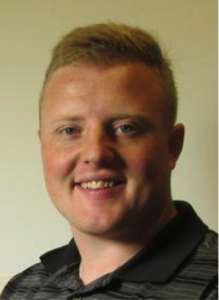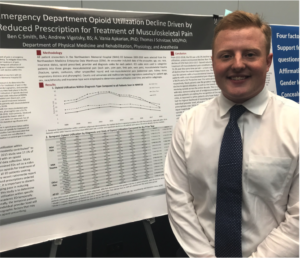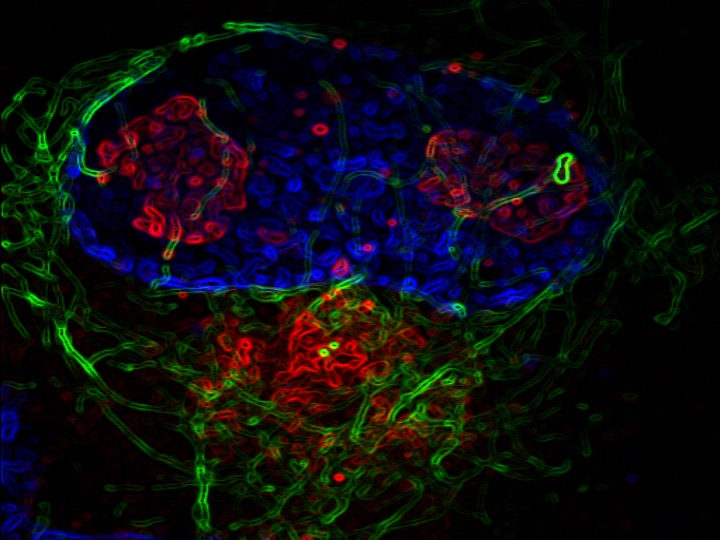
Not every medical student has a background in statistical modeling, but Ben Smith, a second-year student, was able to apply experiences from his economics degree to measure changes in opioid prescriptions.
Smith, along with Andrew Vigotsky, a doctoral student at the McCormick School of Engineering, found that opioid prescriptions declined by over 60 percent from 2013 to 2018, following new guidelines from public health agencies and professional organizations. The study was published in JAMA Network Open, and Smith appeared on the journal’s weekly podcast to discuss the findings.
Read a Q&A with Smith below.
Why did you choose Feinberg?
Feinberg seemed like an excellent place to get my medical education, especially since I have trusted them with my own health for my entire life. I was born at a Northwestern Hospital, and all of my doctors were affiliated with Northwestern growing up.
On a more granular level, Feinberg has excellent research opportunities within the Area of Scholarly Concentration (AOSC) project, and early and immersive clinical opportunities within the Education Centered Medical Home (ECMH) program. On my interview day, the students seemed genuinely happy and being in Chicago allowed me to stay close to my family.
Where are you from and where did you attend undergrad?
I grew up an hour west of Chicago in St. Charles and received an undergraduate degree in economics at Northwestern University in Evanston.
What are your medical or research interests?
I have yet to narrow down the field of medicine I want to enter, so I will be using my third year to hone in on my decision. As a researcher, I enjoy working with large datasets to answer questions about patient management using some of the statistical modeling I learned in my economics degree.
With guidance from Drs. Apkar Apkarian and Thomas Schnitzer, our work was recently published in JAMA Network Open, which was a great honor. The manuscript described temporal opioid prescription trends within the Northwestern Memorial Hospital emergency department by number, condition, physician provider and patient demographic factors.
The department saw overall opioid prescriptions decline by 66.3 percent from 2013 to 2018, which was in part driven by a differential 71.1 percent decline in opioid prescriptions for non-traumatic musculoskeletal pain conditions like back, neck, joint and limb pain. All providers included in the study dispensed fewer opioid prescriptions, and by using logistical regression modeling we found that minority patients, most specifically Asian and black patients, were about 25 percent less likely to receive an opioid when controlling for other factors like age, sex, payer status and time.

The department’s overall decline of opioid prescriptions followed guidelines published within emergency medicine literature in 2013, the Centers for Disease Control in 2016, and a quality improvement program implemented within the department in 2017. This was impressive to see, as the decline outpaced the 22 percent decline in opioid prescriptions over the same period.
Our paper was a descriptive example of how opioid prescription and patient management changed over time by condition, provider and patient demographics. With the potential for chronic opioid use and opioid use disorder, it is important to balance the prescription of opioids while still offering proper analgesia to those in pain. Likewise, it is even more important to find which conditions, in addition to musculoskeletal pain conditions like back pain and neck pain, are conducive to non-opioid analgesia in the acute and chronic setting.
I was also on JAMA Network Open’s weekly live show and podcast to discuss the findings of our paper, which was a new and exciting opportunity for me.
Do you participate in any organizations or societies at Feinberg?
I am a chief in our ECMH, which involves taking point for my class in terms of scheduling students to see patients, day-to-day operations within the clinic and eventually leading quality improvement projects within our group.
I am also on the student review panel for our professional development curriculum, where we take the feedback from our peers about our ethics, transition to the profession, teamwork and leadership, and AOSC courses and meet with faculty to improve upon them.
What has been your most rewarding experience?
I have found working as a chief in ECMH the most rewarding. It has provided me the opportunity to teach my younger peers, manage scheduling and interpersonal relationships within our group, and learn skills to become a better physician and leader in the future.
At the same time, we get to follow individual patients over many visits and develop personal relationships with them, which is one of the most gratifying experiences you can have in medicine and especially while in medical school.
What advice would you give to prospective medical students?
There are obviously some boxes that are necessary to check, but it is more important to do things that you want to do and can invest in. I was only in one club in college, but dove into research, volunteering and had a job as a TA. If you like what you do, it does not feel like checking a box.
Most importantly, don’t try to compensate for a bad grade in a class by joining another club. When things aren’t going right, focus on why things aren’t going the way you want them to and make an adjustment. You will stretch yourself too thin when your main priority is not being addressed.






